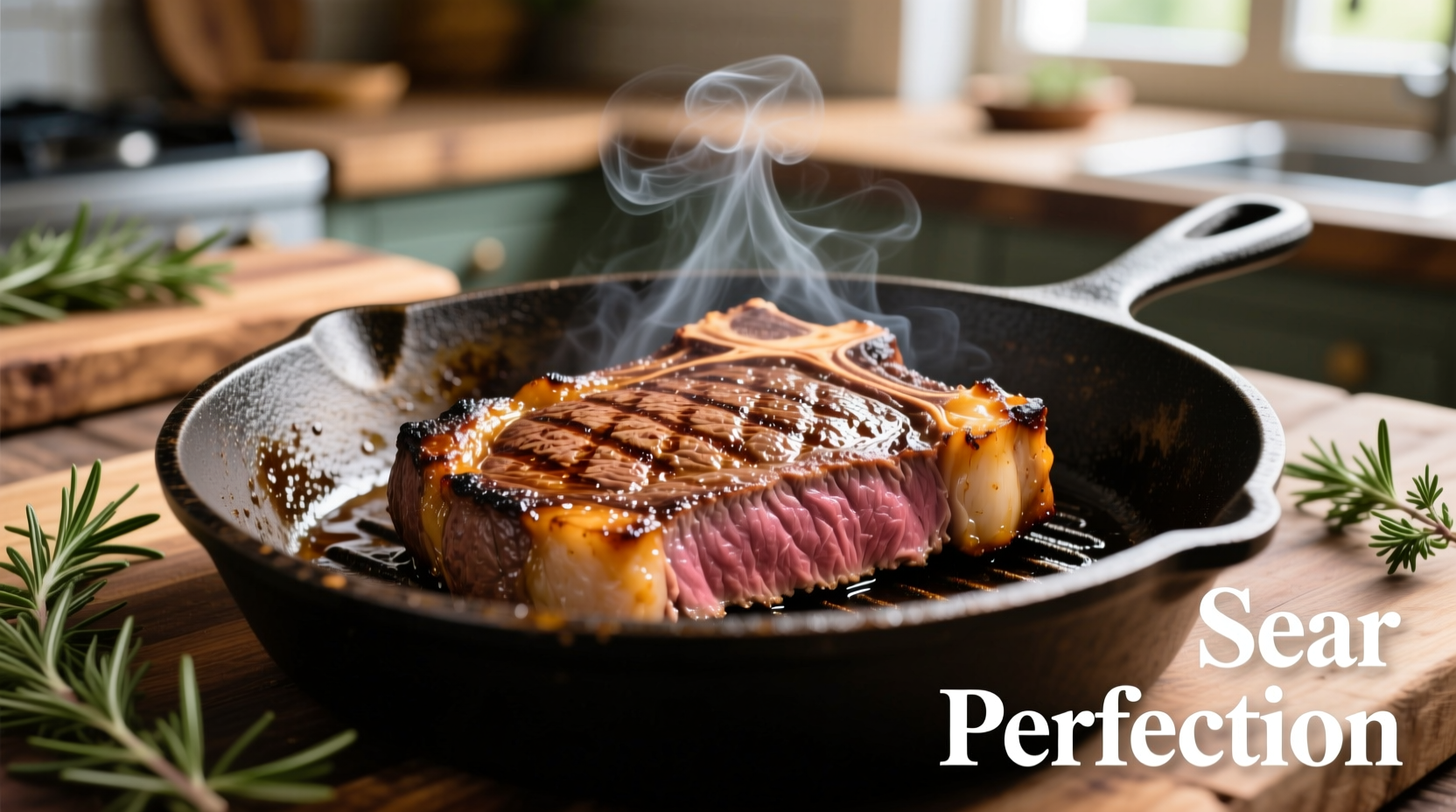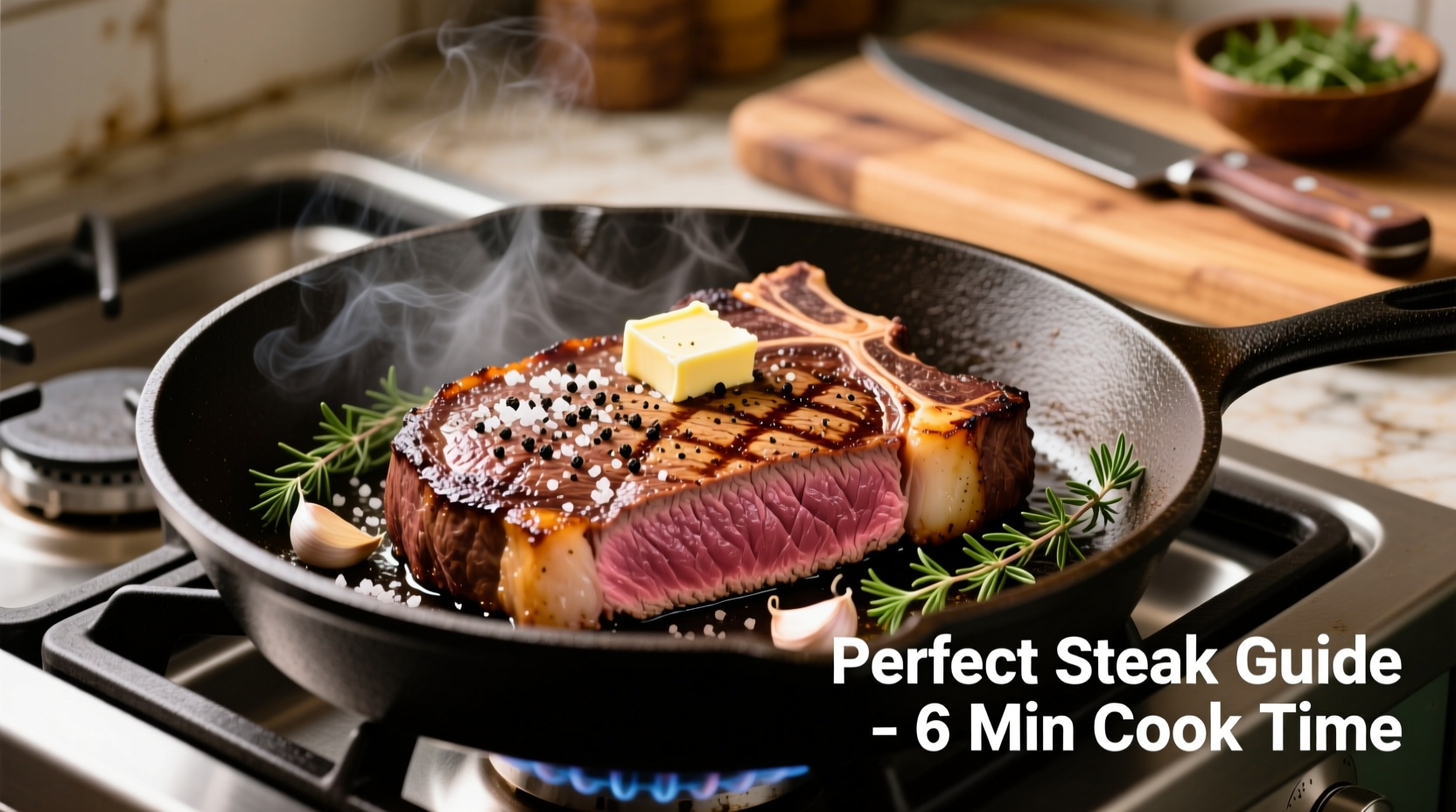Cooking top sirloin steak on the stove delivers exceptional results when you understand the precise timing, temperature control, and resting techniques. Unlike thicker cuts, top sirloin's 1-1.5 inch thickness requires careful monitoring to avoid overcooking while developing that essential caramelized crust. This guide distills professional chef techniques into a foolproof process validated by food science principles.
Why Stove-Top Cooking Works Best for Top Sirloin
Top sirloin (also called top loin steak) offers excellent marbling with less fat than ribeye, making it ideal for stove-top cooking. The American Meat Science Association confirms this cut reaches optimal tenderness when cooked to 130-135°F internal temperature—easily achievable with direct stovetop heat control. Unlike grilling, stove cooking provides consistent temperature regulation critical for this 1-1.5 inch thick cut.
Essential Equipment Checklist
Before starting, gather these tools for guaranteed success:
- Cast-iron or heavy-bottomed stainless steel skillet (avoid non-stick)
- Instant-read thermometer (Thermapen recommended)
- Tongs (no piercing forks)
- Wire rack for resting
- Optional: Butcher's twine for uneven thickness
Step-by-Step Cooking Process
Preparation (30-60 Minutes Before Cooking)
Remove steak from refrigerator 30-60 minutes before cooking. USDA Food Safety guidelines require bringing meat to room temperature for even cooking. Pat thoroughly dry with paper towels—critical for proper searing. Season generously with coarse salt (1 tsp per pound) and freshly ground black pepper. For enhanced flavor, add 1/4 tsp garlic powder.

Cooking Timeline & Temperature Guide
| Doneness | Internal Temp | Total Time* | Visual Cues |
|---|---|---|---|
| Rare | 120-125°F | 6-8 minutes | Pale center, cool red |
| Medium-rare | 130-135°F | 8-10 minutes | Warm red center |
| Medium | 140-145°F | 10-12 minutes | Warm pink center |
| Medium-well | 150-155°F | 12-14 minutes | Small pink area |
*For 1.25-inch thick steak at medium-high heat. Times vary by thickness and stove power.
Stovetop Cooking Technique
- Heat skillet over medium-high until water droplets sizzle violently (400-450°F)
- Add 1 tbsp high-smoke point oil (avocado or grapeseed)
- Place steak in skillet away from you to prevent oil splatter
- Cook undisturbed for 3-4 minutes until deep brown crust forms
- Flip using tongs and cook opposite side 3-4 minutes
- For medium-rare, add 2 tbsp butter, 2 garlic cloves, and rosemary sprig during last 2 minutes
- Baste continuously with melted butter using spoon
- Remove when 5°F below target temperature (carryover cooking will raise temp)
Troubleshooting Common Issues
Excessive smoke: Turn on exhaust fan, open windows, or reduce heat slightly after initial sear. Cast-iron's high heat requirement naturally produces smoke during proper searing.
Steak sticking: Ensure proper preheating and avoid moving steak prematurely. The Maillard reaction creates temporary adhesion that releases when crust forms.
Uneven cooking: For steaks with varying thickness, tie thinner sections with butcher's twine to create uniform thickness.
Pro Tips for Perfect Results
- Thermometer essential: Visual cues alone are unreliable. Invest in an instant-read thermometer—the USDA Food Safety and Inspection Service confirms temperature is the only accurate doneness indicator.
- Resting non-negotiable: Rest 5-7 minutes on wire rack (not plate) to redistribute juices. Cutting too soon loses up to 40% of moisture.
- Angle slicing: Cut against the grain at 45-degree angle for maximum tenderness.
- Pan sauce bonus: After removing steak, add 1/4 cup beef broth and scrape fond for instant pan sauce.
When Stove Cooking Isn't Ideal
While stove-top excels for standard 1-1.5 inch top sirloin, consider alternatives when:
- Steak exceeds 1.75 inches thick (use reverse sear method)
- Outdoor grilling available during warm months
- Cooking multiple thick steaks simultaneously
The Culinary Institute of America's cooking guidelines note that stove-top remains superior for single, standard-thickness steaks due to precise heat control.
Frequently Asked Questions
How long should I cook top sirloin steak on stove for medium-rare?
For a 1.25-inch thick top sirloin, cook 3-4 minutes per side over medium-high heat. Remove at 125°F internal temperature (it will rise to 130-135°F during resting). Total cooking time is 8-10 minutes including basting.
Should I cover the steak while cooking on stove?
Never cover steak while searing. Trapping steam prevents proper crust formation. The Maillard reaction requires dry, direct heat—covering creates steaming conditions that result in gray, boiled meat instead of a flavorful crust.
Why is my top sirloin steak tough after cooking?
Toughness typically results from either overcooking (exceeding 145°F) or insufficient resting time. Top sirloin's moderate marbling requires precise temperature control. Always rest 5-7 minutes before slicing against the grain at 45 degrees to maximize tenderness.
Can I cook frozen top sirloin steak on stove?
While possible, cooking frozen steak extends time by 50% and creates uneven results. Thaw in refrigerator 24 hours before cooking for optimal texture. If frozen, increase initial sear time by 2 minutes per side but expect less precise temperature control.











 浙公网安备
33010002000092号
浙公网安备
33010002000092号 浙B2-20120091-4
浙B2-20120091-4